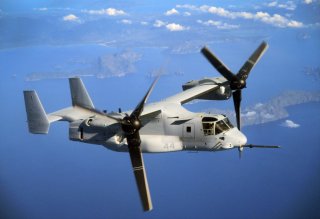After Deadly Accidents, the Marine Corps' Aviation Units Are Standing Down
The move comes after a series of deadly accidents that have resulted in nine fatalities and the loss of four aircraft.
Following a series of deadly aviation accidents, the United States Marine Corps has decided to stand down all aviation units and review the causes and practices that led to the accidents.
A message from the U.S. Marine Corps explained that “the Marine Corps has had six Class-A mishaps since January 2022, resulting in nine fatalities and the destruction of four aircraft. Now is an appropriate time to take a day to conduct a Safety Stand Down, review best practices, and focus on areas where we can improve in order to ensure our units remain capable, safe, and ready.”
The statement further explained that “between 21 June and 1 July 2022, all Marine Aircraft Wing units will conduct a one-day Safety Stand Down in order to reinforce proper procedures, provide information, and gather feedback. Stand Downs shall be conducted during the above window so that previous operational commitments are minimally impacted.”
The message added that “coordinating Instructions, discussion topics, and further guidance will be disseminated via MARADMIN no later than 16 June 2022,” and that the instructions are applicable to “the total force.”
Accident-Prone?
The United States Navy and Marine Corps have had an unusual number of mishaps recently, resulting in a high number of fatalities and injuries. The investigation into the reasons behind these accidents are ongoing.
Five Marines died on June 8 when their MV-22B Osprey crashed in a remote area of California. Another Osprey crash happened on March 18 in Norway, killing another four Marines who were on an exercise deployment to the country. On June 10, a U.S. Navy MH-60S Seahawk crashed. Though there were no fatalities, one crew member was injured. On June 3, an F/A-18E Super Hornet crashed, killing a U.S. Navy pilot.
Reasons Unknown
The reasons behind these accidents are still unknown. But the developments are quite concerning and come on the heels of other deadly Marine Corps accidents.
Earlier last year, an amphibious assault vehicle (AAV), a Cold War-era ship-to-shore vehicle the U.S. Marine Corps has used since the 1970s, sank during a routine exercise off the California coast. The U.S. Marine Corps ultimately chocked up the disaster to improper maintenance and training but grounded the Corps’ AAV fleet from water operations. Following the accident, the Corps also grounded its amphibious combat vehicle, the AAV replacement, due to a tow rope issue.
Though the Marine Corps may not be as accident-prone as the other uniformed military branches, the recent disastrous accidents are shocking. Determining if pilot error is perhaps indicative of training deficiencies or if equipment malfunction is to blame. Either way, the U.S. Marine Corps has several serious investigations to parse through.
Caleb Larson is a multimedia journalist and defense writer with the National Interest. A graduate of UCLA, he also holds a Master of Public Policy and lives in Berlin. He covers the intersection of conflict, security, and technology, focusing on American foreign policy, European security, and German society for both print and radio. Follow him on Twitter @calebmlarson
Image: Flickr/U.S. Marine Corps.

